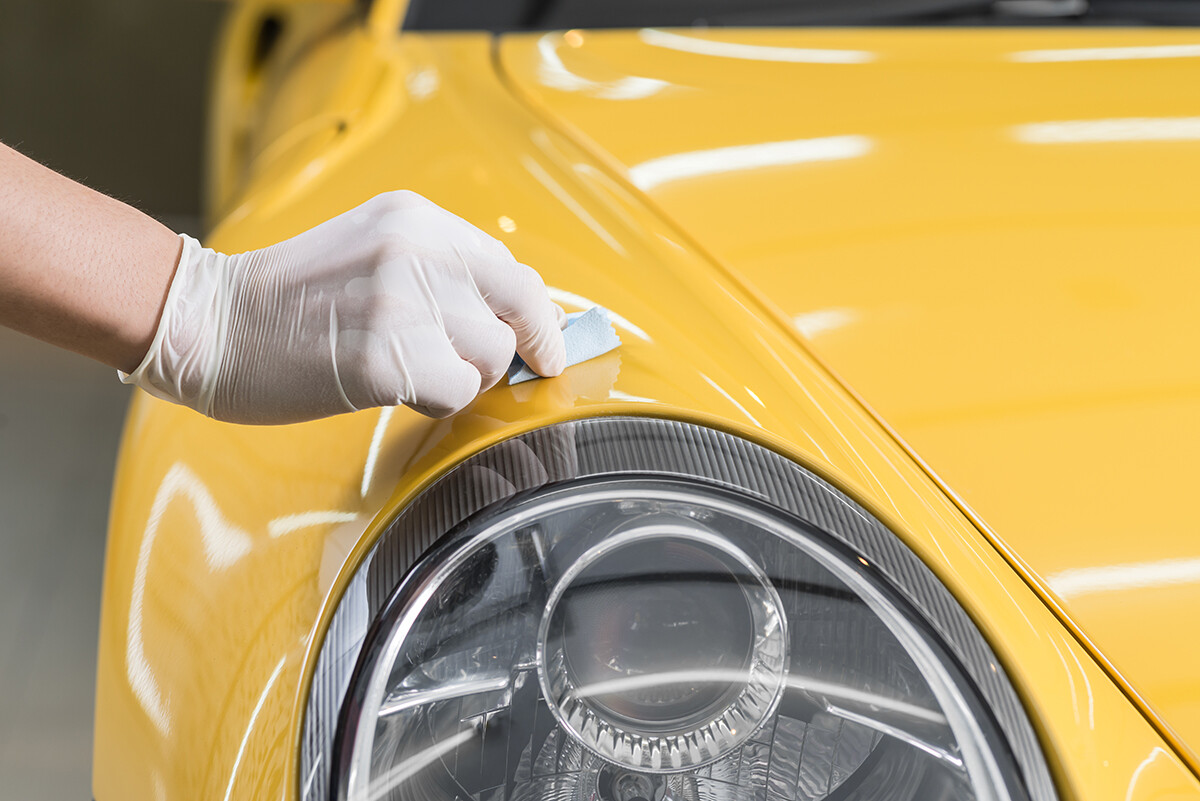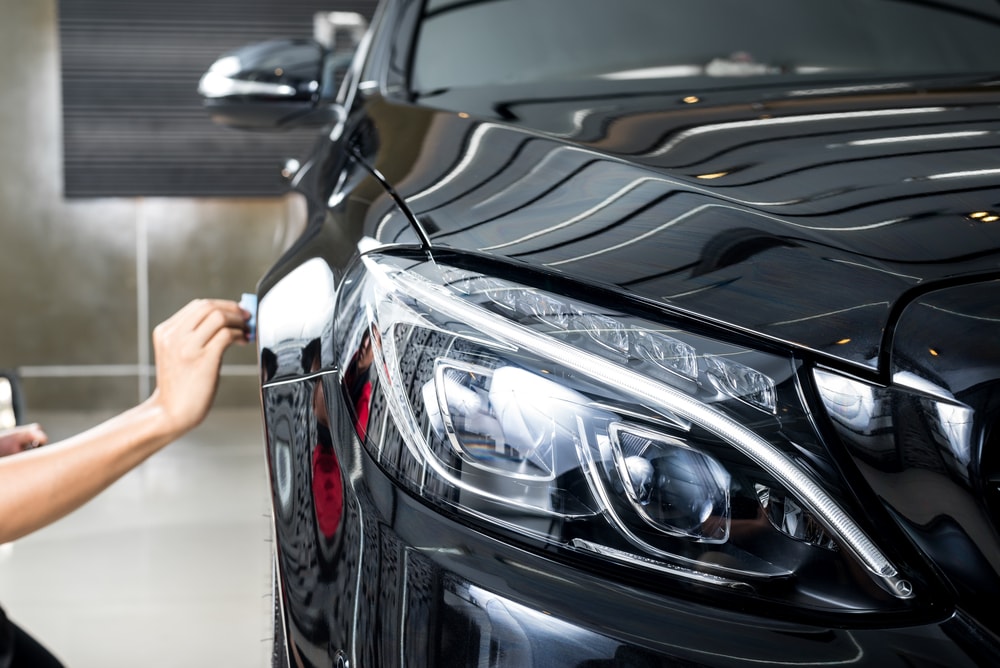Costs Ceramic Coatings San Jose for Ultimate Car Security
Costs Ceramic Coatings San Jose for Ultimate Car Security
Blog Article
Introducing the Scientific Research Behind Ceramic Coatings: Exactly How Does It Job and Why Is It Above Traditional Choices?
Ceramic layers have been getting appeal in numerous sectors for their phenomenal performance and resilience. Comprehending exactly how ceramic finishings job and why they exceed traditional options is important for those looking for to boost the longevity and resilience of their materials.
The Chemistry of Ceramic Coatings
In understanding ceramic finishings, diving into the complex chemistry behind their structure is crucial for realizing their capability and durability. Ceramic coverings are largely composed of silicon dioxide (SiO2), which creates a safety and strong layer when related to numerous surface areas. This chemical framework offers extraordinary resistance to warmth, chemicals, and rust, making ceramic layers very searched for for a wide variety of applications.
The chemistry behind ceramic layers entails the formation of covalent bonds between silicon and oxygen atoms, producing a rigid network that improves the finishing's sturdiness and longevity. Furthermore, the presence of various other elements such as aluminum, titanium, and zirconium additional improves the finishing's residential properties, providing enhanced solidity and adhesion to surface areas.
Understanding the chemical make-up of ceramic coatings permits the personalization of formulations to suit details requirements, whether it be for vehicle, industrial, or residential objectives. By using the power of chemistry, ceramic finishings proceed to lead the method for exceptional security and performance in different industries.
Advantages of Ceramic Coatings

An additional significant advantage of ceramic coverings is their hydrophobic nature. This residential property creates water to bead up and roll off the covered surface area, bring dirt and contaminants with it. Consequently, ceramic coverings make cleaning and preserving surfaces a lot easier and much less taxing. Additionally, ceramic coatings provide boosted gloss and color deepness, offering surfaces a vivid and shiny appearance. Generally, the wide range of advantages offered by ceramic coatings make them a remarkable alternative compared to conventional layer methods.
Exactly How Ceramic Coatings Bond
Ceramic finishings bond to surface areas through a procedure that involves molecular attachment and chemical interactions. When a ceramic covering is used to a surface area, it develops a solid bond by chemically adhering to the surface area at a molecular level.
In addition, the chemical communications in between the ceramic coating and the surface area further improve the bond. ceramic coatings san jose. These communications permit the ceramic coating to produce a constant and seamless layer on the surface, providing exceptional protection and durability. Unlike typical layers that might rest on the surface area without completely bonding, ceramic layers produce a long-term bond that is immune to chemicals, UV rays, and harsh ecological problems

Essentially, the bonding system of ceramic finishings ensures a long-lasting and efficient protective layer that surpasses typical finishing alternatives. This exceptional bond adds to the durability, scrape resistance, and long life of ceramic finishings, making them a recommended choice for pop over to this web-site numerous applications.
Longevity of Ceramic Coatings
The exceptional durability of ceramic coverings stems from their robust molecular attachment and chemical communications with surface areas, guaranteeing a durable protective layer that surpasses standard covering choices. Once applied, ceramic coverings form a strong bond with the substrate, developing a resilient obstacle versus numerous environmental stress factors such as UV radiation, chemicals, and abrasions. This bond is so safe that it can endure the roughness of daily use without weakening or weakening promptly.
Unlike conventional finishes that might weaken over time, ceramic layers keep their honesty for an extensive duration, giving durable defense for the underlying surface area. The strong molecular structure of ceramic coverings resists chipping, fading, and peeling, making certain that the surface continues to be protected and cosmetically pleasing for many years ahead. This toughness not just minimizes the requirement for constant reapplications but likewise saves money and time in the lengthy run. In general, the outstanding resilience of ceramic coatings makes them a superior option for protecting a variety of surfaces in different applications.
Ceramic Coatings Vs. Standard Alternatives
In comparison to traditional finishing techniques, ceramic coverings provide a distinctive mix of toughness and safety capabilities that establish them apart in different surface area defense applications. Standard choices such as wax or sealants offer a temporary layer of protection that can subside rapidly, needing regular reapplication. On the various other hand, ceramic coatings develop a strong bond with the surface area, try this site producing a semi-permanent or irreversible obstacle that is extremely resistant to abrasion, chemicals, UV rays, and severe temperature levels.
In addition, ceramic finishings use premium hydrophobic residential or commercial properties compared to standard finishes. The hydrophobic nature of ceramic coatings creates water to bead up and roll off the surface area, bring dust and impurities with it. This self-cleaning impact aids to maintain the surface area's sanitation and gloss for extended periods, lowering the need for regular upkeep.
Additionally, ceramic layers have a thicker layer contrasted to conventional alternatives, giving boosted scratch resistance and defense against small effects. This durability ensures long-lasting performance and aids protect the visual appeal of the dealt with surface area for an extensive duration.
Conclusion
Finally, the scientific research behind ceramic finishings depends on their chemical make-up and bonding residential properties, making them above typical alternatives. The advantages of ceramic finishes include increased durability and security for surface areas. By recognizing exactly how ceramic finishes work and their benefits over standard alternatives, one can make educated choices when thinking about covering choices for different applications.
Unlike conventional coatings that might sit on the surface area without fully bonding, ceramic coverings develop an irreversible bond that is immune to chemicals, UV rays, and severe ecological conditions.
The exceptional long life of ceramic finishings stems from their robust molecular attachment and chemical communications with surfaces, making certain a long lasting safety layer that exceeds traditional finish choices.Unlike conventional finishes that may break down over time, ceramic coatings preserve their stability for more helpful hints an extended duration, supplying lasting security for the underlying surface.In contrast to traditional layer approaches, ceramic coverings provide an unique blend of sturdiness and safety abilities that set them apart in different surface protection applications. By understanding how ceramic coverings work and their advantages over conventional choices, one can make educated choices when considering layer choices for numerous applications.
Report this page